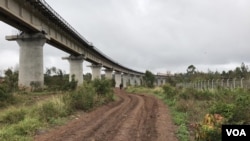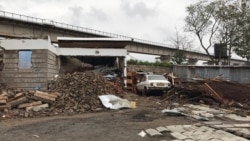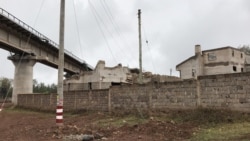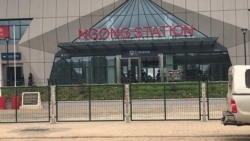While some Kenyans are celebrating the second phase of a cross-country Chinese-built railway line, others are angry about what the railway has cost them: their land and their homes.
Along the newly launched railway line, in Ongata Rongai, about 20 kilometers from Nairobi, there is a stretch of road dotted by destroyed houses.
Hundreds of homes were demolished to make way for the railway, meant to ease the transportation of people and goods.
Mary Abuto, 50, lost half of her property along the railway line.
"When you have a home, you had already planted your trees,” she said. “Now those trees are not there. You start from scratch. A field where there is nothing, totally nothing. You start afresh. In fact, it's like I have been taken almost 15 years back. It's very traumatizing and it's very discouraging."
Speaking few kilometers from Abuto's old home Wednesday, President Uhuru Kenyatta told Kenyans living in the area that the railway would bring growth to the residents.
"We know the railway is a development, and we know where we are today, because of the railway line passing through Ongata Rongai, there will also be development here, too," he said.
The Kenyatta government spent $1.5 billion to build the second phase of the railway line from Nairobi to Naivasha, a town in the Rift Valley region.
Part of that money was used to compensate people whose land and property were taken.
Abuto, a mother of four, said the money given to her was not enough.
“I cannot say it was enough and it will never be enough, because even right now I am struggling,” she said. “That place I was living was half an acre. Where I am going right now is less than a quarter, and I am paying 9 million [shillings]. The house I built, if I were to sell it this time, maybe I could have sold it at even 30 million or more."
In Narok County, about 10,000 people have been affected by the project. Joseph Ole Kishau, a community leader, said the affected families had been allocated a piece of land.
In his view, it's better than nothing.
"The families were given 4,000 acres of land so that the railway project can go on, and we thankful for the ministers for their work,” he said. Getting the land, he said, was better “than not getting anything. We are thankful."
The government of Kenya borrowed $4.5 billion in all to build the railway, which now stretches from the coastal city of Mombasa to Naivasha.
Early this year, the government failed to secure a loan from China for the project’s third phase, which will take railway to the border with Uganda.
Kenyatta insists that despite the financial challenges, he is committed to completing the project, which he says will open Kenya for business and bring economic growth.








